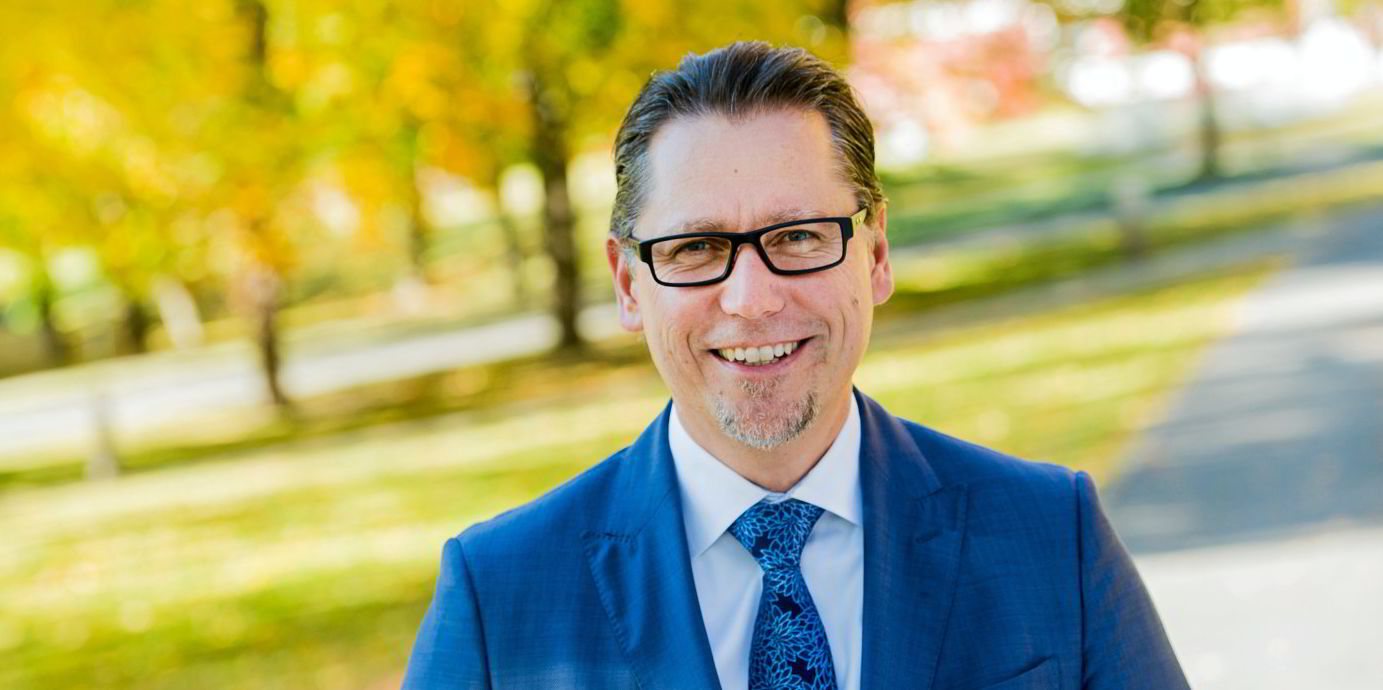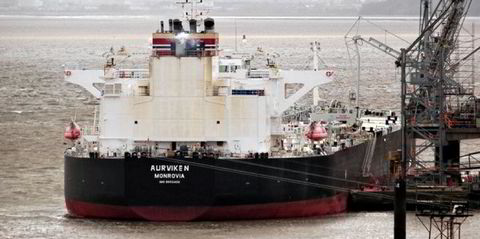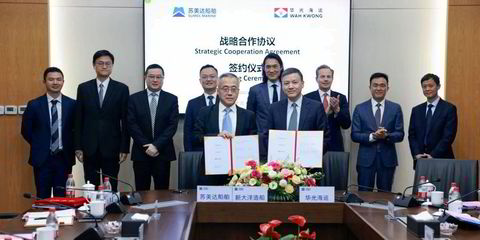Being the head of a leading classification society gives DNV group president Remi Eriksen an insider’s view of the race to decarbonise shipping through the use of new green fuels.
In an exclusive interview with TradeWinds, Eriksen outlined what he believes is the industry’s roadmap to meeting the International Maritime Organisation’s zero-carbon goals.
LNG has become the first fuel touted as the greener way forward, and although by no means the perfect solution, Eriksen said it still has a very important role to play despite other alternative fuels being better suited to the target.
“I believe LNG will be the fuel of choice for many years to come because that’s the technology that is available,” he said.
Eriksen said drop-in biofuels will also play an early role in the race to decarbonise shipping, but cautioned that it had limitations on the supply side.
“There is a space for biofuel, but it can only be produced in limited volumes, and there will be a lot of competition for that biofuel ... I think it will be used as a bridge,” he explained.
Ammonia and methanol are widely regarded as the front runners for shipping’s long-term green fuel of the future, but Eriksen concedes the jury is still out on which will be more widely adopted.
DNV is a partner in Singapore’s Global Centre for Maritime Decarbonisation, which is working on an ammonia bunkering pilot, but Eriksen predicts that ammonia will not have a big impact on the emissions of shipping until the 2030s because of all the logistical steps needed to have the technology in place.
Engine maker MAN Energy Solutions, he said, will have its four-cylinder ammonia-fuelled engine ready by 2024.
“We tend to find that then you need to pilot it, and scale it. You need bigger engines, with six to eight cylinders, and that will take maybe another two to three years, so it will take time before the technology is ready to order vessels with ammonia, it will take some years.”
Eriksen also stressed that switching to alternative fuels involves more than just new engines and tank systems, pointing out that refuelling vessels using ammonia or methanol also requires the creation of a whole new bunkering infrastructure.
Chicken and egg situation
When it comes to the development of that required infrastructure, Eriksen is confident that the age-old laws of supply and demand will play a key role.
“That will develop when you have a seller and a user or buyer. I think that the way this will be developed is through green corridors since there is no market yet. You will not just produce ammonia for the sake of producing ammonia — you will have an offtaker of that ammonia.”
That will develop when you have a seller and a user or buyer. I think that the way this will be developed is through green corridors since there is no market yet.
The green corridors that Eriksen mentioned are likely to follow shipping’s main trade routes, and he noted that major ports in Asia, the Middle East and Europe have looked into what will be required.
“I think it will be quite bespoke in the beginning, with major hubs taking part. We definitely see the ports and terminals being the hub of this transition, where the producers and the distributors of the fuels meet the consumers of the fuels. So, terminals and how they are covered, how the fuels are brought into the terminals, and the whole bunkering process are key.
“Infrastructure owners, the fuel producer and the fuel user will have to figure this out together and as part of that green corridor development, fuel infrastructure will be developed.”
Eriksen also cautioned that ships powered with the new fuel types currently under development are also likely to require more frequent refuelling because the energy densities will call for ships to have much larger fuel tanks to cover the same distance they would have had they been powered with conventional fuel oil.
“In order not to waste too much cargo space, you will probably have to fuel more often than before,” he said.
This, Eriksen added, will require ship operators to look carefully at vessel design and itinerary planning to take into account what distances and which ports they want to cover — and then they will have to get those ports involved.
But first, he said, there needs to be a buyer and a seller of the fuel.






